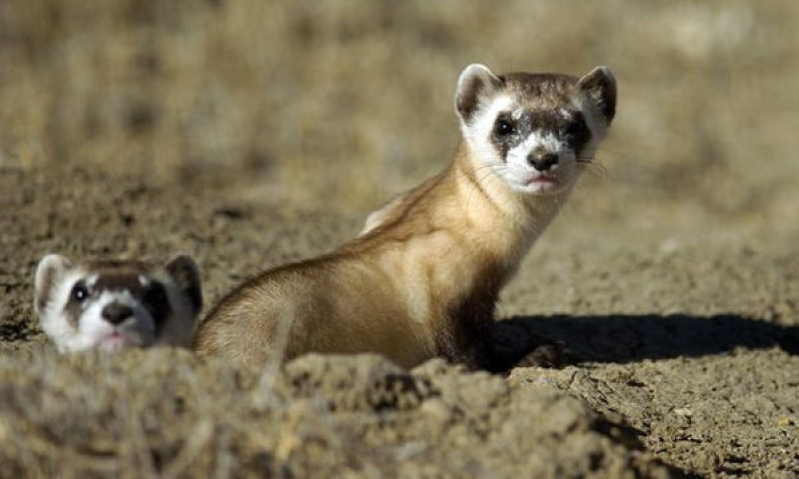
When your little ones had to take a bitter-tasting medicine, much cajoling had to be done -- including "bribing" them with sweets or some other kind of reward afterwards. This might not be an advisable method for the long run, but it is effective enough for the moment. It looks like the U.S. Fish and Wildlife Service (FWS) has picked up on that idea by making use of drones to dispense M&M candy in order to save the endangered black-footed ferrets that are located in rural Montana.
What do these endangered ferrets have to do with M&M, the candy that melts in your hand and not in your mouth? A whole lot, apparently. A little bit of background information is required before we continue though. The ferret's main source of food happens to be prairie dogs. Unfortunately, these prairie dogs have been badly hit by the sylvatic plague, which happens to be a disease spread by rats and fleas. It is not something new, as the sylvatic plague has existed since the 1800s.
Hence, if your main source of food starts to die and disappear, you would also starve. Eat a meal that is infected by the sylvatic plague is not a good idea either, as it ends up affecting you negatively, or even in death. The answer? To vaccinate your food, so that you end up with far more nutritious and healthy "meals".
Biologists have managed to distribute a sylvatic plague vaccine to prairie dogs, although the method employed is a tedious albeit healthy one. Distribution occurs by walking pre-determined routes, dropping every 9-10 meters bait that is filled with the vaccine. This hand distribution method does take up a whole lot of unnecessary time, as biologists could manage the deployment of anywhere from 150 to 300 doses per hour.
The FWS decided to turn to other aspects of modern day technology to get the job done in a far more efficient method, and drones are the answer. Basically, a single drone is capable of treating up to 10,000 acres of land per year, so when you multiply that by many drones, you would get a better mental picture of what can be achieved. Of course, the piloting of the actual drone will be done by a private contractor. This private contractor will navigate said drone across the prairie, an act that distributes up to 3,000 doses in an hour. The efficiency level is anywhere from 10 to 20 times more compared to the old fashioned method of hand distribution.
The Guardian claims that this particular vaccine is made all the more enticing since it is mixed with peanut butter, and the solution will coat the M&Ms in order to be a truly delicious bait. We do not know the kind of drone that is used, although the actual distribution will happen by mounting to the drone a dispenser. This dispenser happens to be a modified fish-bait machine, where it will send the delicious bait out as it flies. So far, the plan has not received approval from the top brass, but in theory, it does look to be the most efficient method of getting the job done.
Perhaps if it is deemed to be successful upon implementation, we might see the same modus operandi applied in other wildlife situations.







